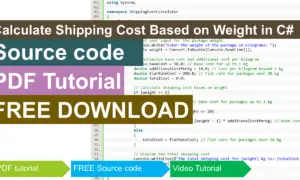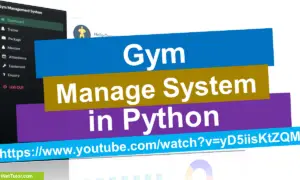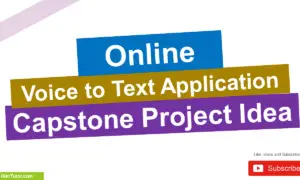Project Ideas Related to Food Ordering System
Are you planning to build a food ordering system but don’t know where to start? With the rise of online food ordering and delivery services, having a food ordering system is becoming essential for restaurants and food businesses to stay competitive. But with so many options available, it can be overwhelming to choose the right one. That’s why in this blog post, we’ve compiled a list of 16 project ideas related to food ordering systems that you can use as a starting point to develop your own system. Whether you’re looking to create a simple ordering system or a more complex one with advanced features, there’s something for everyone on this list. So read on to discover the various project ideas and technologies that can help you create a successful food ordering system.
What is a food ordering system?
Table of Contents
In today’s fast-paced world, the demand for online food ordering and delivery services has been increasing rapidly. A food ordering system is a digital platform that enables customers to place their food orders online and have them delivered to their doorstep. This system allows customers to browse through the menu, select their desired items, and pay for them online.
Food ordering systems have been around for quite some time, with the first online food ordering system being introduced in the late 1990s. Since then, the technology has evolved considerably, and today, we have sophisticated systems that offer a wide range of features, including online payments, order tracking, and real-time updates.
A food ordering system is a web-based platform that enables customers to place orders for food items from restaurants and food delivery services. The platform allows customers to browse menus, select items, and make payments for their orders. The food ordering system is a valuable tool for restaurant owners, as it allows them to manage their orders, inventory, and customer data more efficiently. The system can also be integrated with third-party delivery services, enabling restaurants to expand their customer base and reach more customers. The food ordering system is becoming increasingly popular, particularly in urban areas where people have busy schedules and limited time for cooking or dining out.
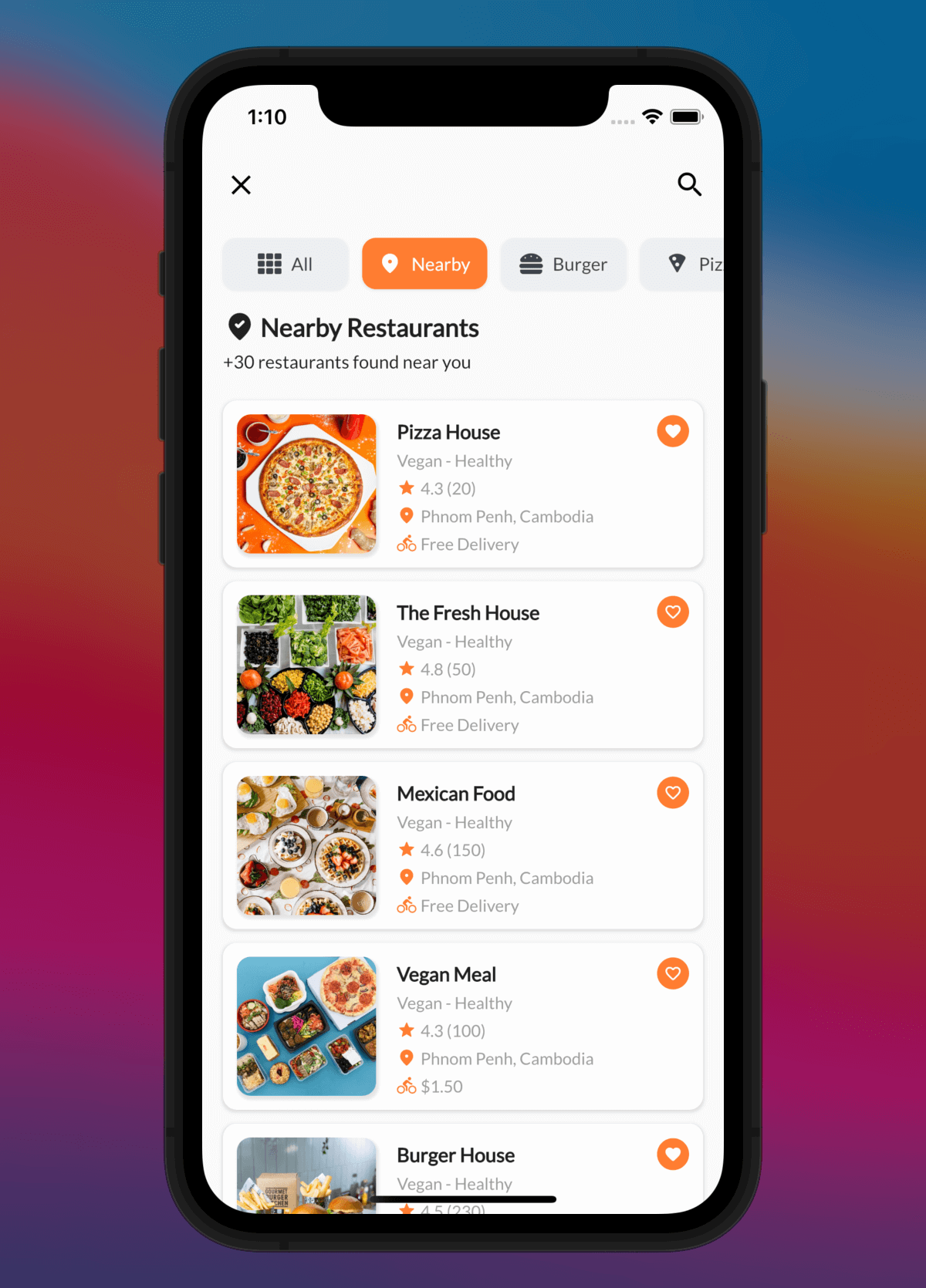
Importance of food ordering system
The food industry is highly competitive, and restaurant owners need to find innovative ways to stay ahead of the competition. One way to do this is by implementing a food ordering system. Here are some of the benefits of using a food ordering system:
- Increased efficiency: By automating the food ordering process, restaurant owners can streamline their operations, reduce errors, and improve efficiency.
- Enhanced customer experience: Customers today expect convenience and speed when it comes to food ordering. A food ordering system provides a seamless and hassle-free experience, which can help improve customer satisfaction and loyalty.
- Better data management: Food ordering systems provide valuable insights into customer behavior, ordering trends, and sales data. This information can be used to make data-driven decisions and improve business performance.
Purpose of the blog post
The purpose of this blog post is to provide some project ideas related to food ordering systems. These ideas are suitable for students, developers, or anyone who is interested in creating a food ordering system or enhancing an existing one. These ideas are designed to inspire and provide direction to those who may be struggling to come up with their own ideas.
Online Food Catering Conceptual Framework: This content provides a high-level view of the structure and function of an online food catering system. It may include diagrams or flowcharts to explain the system’s features and processes.
Food Ordering System Use Case Diagram: This content is a visual representation of the different actors and their interactions with the food ordering system. It outlines the system’s functionalities, user roles, and possible scenarios.
How to Create Food Ordering System: This content provides a step-by-step guide on how to create a food ordering system, including the required tools and technologies, and best practices in development.
Multi-tenancy Based Food Grocery & E-commerce Builder Platform: This content refers to a platform that enables users to create their own online food ordering system. It includes tools and templates for customization, allowing businesses to build their unique branding and features.
Restaurant Food Delivery System Free Database Design Tutorial: This content provides a guide on how to design and develop the database for a restaurant food delivery system. It includes best practices in database management and optimization.
Food Ordering App in Flutter Free Source Code: This content provides source code for building a food ordering mobile application using the Flutter framework.
IPO Model Conceptual Framework of Restaurant Food Delivery System: This content explains the Input-Process-Output (IPO) model applied in a restaurant food delivery system. It outlines the system’s inputs, processing, and outputs, including the data flow between different components.
Restaurant Food Delivery System Free Download Bootstrap Source code: This content provides free source code for developing a restaurant food delivery system using the Bootstrap framework.
Food Donation Services Free Download Template Source code: This content provides free templates for building a food donation service platform. It includes features such as user registration, food collection, and distribution management.
Food Order and Catering Services System Capstone Project: This content proposes a capstone project for students interested in developing a food ordering and catering system. It includes guidelines for project development, such as requirements gathering, system design, and testing.
Online Food Ordering System ER Diagram: This content provides an entity-relationship (ER) diagram for an online food ordering system. It outlines the system’s data structures, relationships, and constraints.
Java Swing Framework Point of Sale for Fast Food: This content provides source code for building a point-of-sale (POS) system for fast food restaurants using the Java Swing framework.
Online Food Ordering System Database Design: This content provides a guide on how to design and develop the database for an online food ordering system. It includes best practices in database management and optimization.
Online Food Catering Services Management System with Payment Gateway: This content proposes a management system for online food catering services. It includes a payment gateway integration, order tracking, and inventory management.
Online Food Ordering System with Real-Time Customer Feedback using PHP, MySQL and Bootstrap: This content provides source code for building an online food ordering system with real-time customer feedback. It uses the PHP, MySQL, and Bootstrap frameworks.
Online Catering Reservation System ER Diagram: This content provides an ER diagram for an online catering reservation system. It outlines the data structures and relationships between different components, such as customers, caterers, and orders.
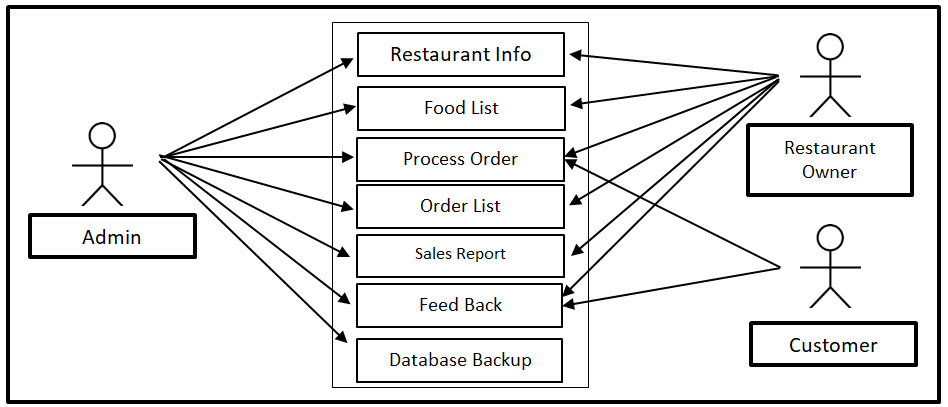
Features to include.
When developing a food ordering system, there are some essential features that need to be included for it to be effective. Some of these features include:
- User registration and login: A user registration and login feature will enable users to create an account and log in to the system to access the services.
- Menu management: This feature allows the restaurant or food joint to manage its menu, update the prices, and make changes as needed.
- Ordering system: The ordering system allows users to select the food items they want to order and add them to their cart.
- Payment integration: This feature enables users to make payments online using their preferred payment method.
- Order tracking: Order tracking is a crucial feature that allows users to know the status of their order, from the time it was placed to the time it is delivered.
- Feedback system: The feedback system enables users to give feedback on their experience using the food ordering system, the food quality, delivery time, and other aspects.
Technology stack to use.
The technology stack to use when developing a food ordering system will depend on the requirements and the features needed. Here are some of the commonly used technologies when developing a food ordering system:
- Front-end development: The front-end development of a food ordering system can be done using HTML, CSS, JavaScript, and popular frameworks like React, Angular, and Vue.
- Back-end development: The back-end development of a food ordering system can be done using programming languages like PHP, Python, Ruby, or Java. Popular frameworks for back-end development include Django, Flask, Ruby on Rails, and Spring.
- Database: A food ordering system requires a database to store user data, order information, and other related data. Commonly used databases include MySQL, PostgreSQL, MongoDB, and Oracle.
- Payment gateway integration: Integrating a payment gateway is a crucial part of developing a food ordering system. Common payment gateway options include PayPal, Stripe, and Braintree.
- Cloud hosting: When developing a food ordering system, cloud hosting can be used to ensure that the system is scalable and can handle a large number of users. Commonly used cloud hosting platforms include Amazon Web Services (AWS), Microsoft Azure, and Google Cloud Platform (GCP).
Overall, the technology stack used should be scalable, secure, and reliable to ensure that the food ordering system functions effectively.
Summary and Final thoughts
In conclusion, developing a food ordering system can be a lucrative venture for businesses looking to increase their revenue streams and provide convenience to their customers. With the advancements in technology, there are various features and technology stacks available to make the process smoother and more efficient.
By carefully considering the features to include and technology stack to use, businesses can create a food ordering system that caters to their specific needs and target audience. With the right approach and execution, a food ordering system can bring significant benefits to businesses and customers alike.
Overall, the potential for a successful food ordering system is vast and promising, and businesses that take advantage of this trend can reap significant rewards. We hope this blog post has been helpful in providing insights and inspiration for those looking to venture into this exciting field.
Readers are also interested in:
How to Create Food Ordering System
Online Food Ordering System ER Diagram
Online Food Ordering System Database Design
You may visit our Facebook page for more information, inquiries, and comments. Please subscribe also to our YouTube Channel to receive free capstone projects resources and computer programming tutorials.
Hire our team to do the project.
